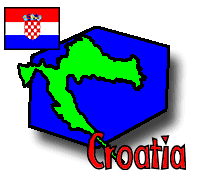
Person of the Day: Aleksandar Fabijanic ![]()
Place of the Day: Zadar
Tech Fact of the Day: latitude and longitude
Group Dispatch, April 23-25

Questions? Ask Anthony ![]() !
!
 |
 |
 |
 |
 |
|
Itinerary/ Journal |
Discussions |
About Croatia |
eDscape Projects |
Scrapbook |
|
|
|
|
|
|
|
Copyright 1997-99 BikeAbout. All rights reserved.